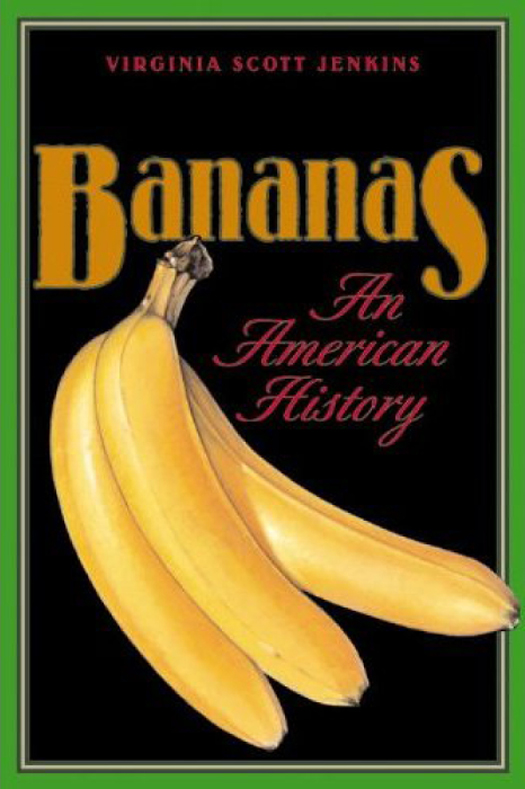
Bananas
An American History
- اطلاعات
- نقد و بررسی
- دیدگاه کاربران
نقد و بررسی

August 14, 2000
"A study of the banana at first may appear frivolous," writes Jenkins (The Lawn: A History of an American Obsession). But "the use of everyday food can offer a window into the culture of the United States." Drawing from an unusual assemblage of evidence, Jenkins (a scholar-in-residence at the Chesapeake Maritime Museum) argues that Americans' ideas about the fruit--how to store it, how to cook it, what it's good for--were invented, over the course of the 19th and 20th centuries, by advertisers and growers. And their campaigns worked like a charm: before 1880, most Americans hadn't even seen a banana; by 1910, they were consuming vast quantities of the fruit. How did this happen? Introduced to wealthy Americans in the second half of the 19th century as a delicacy, Jenkins argues, the banana was quickly seized upon by businessmen who understood that they could make a huge profit importing fruit. So they built large banana plantations in Central America and the Caribbean; soon, they had gained economic and political power in Cuba, the Dominican Republic, Haiti and Mexico. Protected by American troops, U.S. corporations like United Fruit helped set up puppet dictatorships in countries wherever they had plantations (hence the term "banana republic"). Jenkins capably takes readers through this history, then describes how American businesses orchestrated popular demand for the fruit--by keeping the price low and waging a relentless advertising campaign that promoted the banana as delicious and healthful, either raw or cooked. Although the book includes a wealth of trivia on banana jokes, songs and recipes, it is really Jenkins's historical overview of the banana's production, marketing and transporting that makes this book a strong contribution to the growing field of food studies. B&w photos.

August 9, 2000
Bananas is the latest in a line of social histories of different foodstuffs. Jenkins, a scholar-in-residence at the Chesapeake Bay Maritime Museum and author of The Lawn: An American Obsession, discusses the influence of bananas on American foreign policy, humor, and popular music (from Carmen Miranda to the Chiquita Banana Song). She does bring up some interesting points, e.g., that American banana companies were responsible for much of the infrastructure built in Central America and that the Banana Festival in Fulton, KY, was actually a weapon against communism. But Jenkins's study bogs down when she discusses the marketing strategies of the banana companies. Comprising the bulk of the book, this repetitious discussion makes more of the material than is warranted. If your library includes Mark Kurlansky's Cod (LJ 7/97), Betty Fussell's The Story of Corn (LJ 7/92), and Larry Zuckerman's Potato: How the Humble Spud Rescued the Western World (Faber & Faber, 1998), this might be a worthy complement; otherwise, it is not essential.--Tom Vincent, P.L. of Charlotte & Mecklenburg Cty., NC
Copyright 2000 Library Journal, LLC Used with permission.

September 1, 2000
Although the study of the banana at first may appear frivolous, Jenkins insists that the social history of food can offer a window on culture, and her focus here is the nineteenth- and twentieth-century U.S. By 1999 annual consumption of the fruit had risen to 75 bananas per person, more than any other fruit. The first chapter traces the introduction of bananas into the U.S., and the second chapter discusses the development of the major U.S. banana-importing companies, the original multinational corporations. The author explores the growth of the nation's modern transportation system, using the banana as an example of a perishable commodity that was difficult to move from producer to consumer. She discusses marketing, public health and sanitation issues, and consumption of the fruit (banana splits, banana bread, and bananas on our breakfast cereal, for instance). A chapter on celebrating bananas is devoted to the twin cities of Fulton, Kentucky, and South Fulton, Tennessee, where a weeklong International Banana Festival is held each year. A final chapter looks at the fruit's place in American culture.(Reprinted with permission of Booklist, copyright 2000, American Library Association.)




دیدگاه کاربران